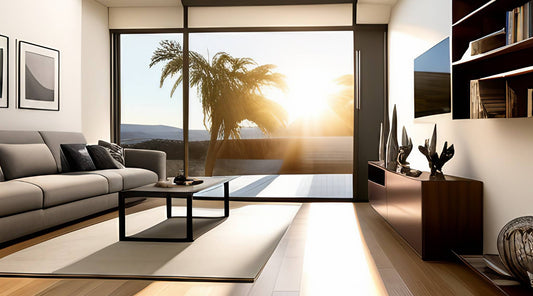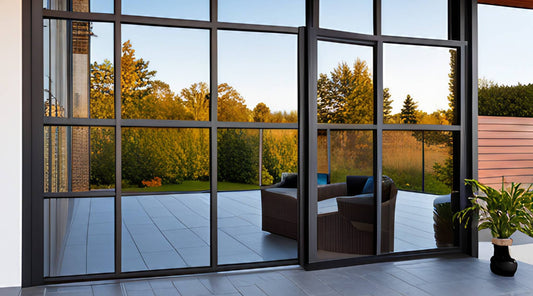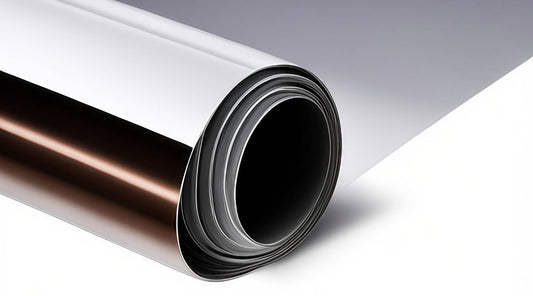What Is Window Film — And Why Do People Install It?
So, what exactly is window film? At its simplest, it’s a thin laminate or polyester sheet that adheres directly to glass surfaces, typically on the interior side of a window. But don’t let the simplicity fool you—modern window films are engineered marvels that do everything from controlling solar heat to deterring burglars. They're the unsung heroes behind more comfortable, energy-efficient, and private living and working spaces.
Let’s break it down. You can get films that block UV rays, reflect heat, reduce glare, provide one-way privacy, or even just add a bit of decorative flair. Some are nearly invisible; others create a mirror-like sheen or a frosted pattern. The variety is huge, and that’s great news because not every room has the same need. Think of it like picking sunglasses: sometimes you want Ray-Bans, and other times you need polarized sports lenses. Same logic applies.
The Basics of Window Films
Window films come in different categories depending on their purpose:
- Solar Films: These reduce the amount of solar energy that enters a room. They block heat, glare, and UV rays without necessarily making the space darker.
- Privacy Films: These include frosted or mirrored films. Some work only during the day and rely on lighting differences between inside and out.
- Decorative Films: These add patterns, textures, or colours. Think of conference rooms with etched designs or bathrooms with frosted glass.
- Security Films: Thicker and more robust, these help hold glass together during impacts or attempted break-ins.
Common Reasons to Use Window Film
Here at Tintly Window Films®, we’ve seen it all. One client in Mississauga had antique furniture fading because of sun exposure. Another in downtown Toronto couldn’t watch TV at noon thanks to relentless glare. And let’s not forget the homeowner in Oakville who got tired of people peering into their home office during Zoom calls. Each of them had wildly different goals, but window film was the answer every time.
The top reasons people opt for window film include:
- Temperature control: Films can cut heat gain in summer and reduce heat loss in winter.
- UV protection: Blocks up to 99% of harmful ultraviolet rays that cause fading.
- Energy savings: Reduced need for AC or heating means lower bills.
- Privacy: Keep prying eyes out without sacrificing style.
- Aesthetics: Improve the look of glass with frosts, gradients, or even printed designs.
People often assume it’s just for looks or sun protection, but in reality, window films serve both form and function. The trick is matching the right film to your specific needs. And that’s where we come in.
Does Window Film Actually Make a Room Darker?
Let’s cut to the chase: some window films make a room darker. But — and this is crucial — it depends entirely on the type of film you choose. Saying "window film makes your home dark" is like saying all hats mess up your hair. Sure, some do. But others actually make things better.
The most important thing to understand is Visible Light Transmission, or VLT. This is the measure of how much visible light passes through a film. It’s given as a percentage. A film with a VLT of 70% lets in 70% of the sunlight; one with a VLT of 15% is much darker and will feel like you’re wearing shades indoors. Think of it as the difference between a sheer curtain and blackout blinds.
I once had a client in North York who was worried her plant room would turn into a dungeon if she installed solar control film. We tested a high-VLT ceramic film—it blocked the heat but kept the brightness. Her fiddle leaf figs didn’t even notice. She later told me she forgot the film was even there, except for how much cooler the room felt.
The Short Answer (With a Twist)
So yes, window film can reduce brightness—but usually not enough to make your space gloomy, especially if you choose wisely. Some of the clearest films on the market today can block UV and infrared heat while still allowing over 70% of visible light through. That’s practically invisible to the eye.
Want to reduce glare without turning off the sun? Choose a dual-reflective film with moderate VLT. Want full privacy in your bathroom? A frosted or whiteout film will definitely cut brightness, but that’s likely the goal anyway. It’s all about intention.
Funny enough, I had one couple install mirrored film thinking it would be bright and modern. Turns out, the inside looked like a pair of oversized sunglasses. They swapped it for a lighter neutral tint the next week. Lesson learned: ask the right questions first.
If you’re ever unsure, ask your installer to demo a few samples in different lighting. At Tintly, we’re big fans of the "patch test" approach. Better to see it with your own eyes than rely on guesswork.
Frequently Asked Questions (FAQs)
1. Does window film make a room darker?
Some window films can slightly darken a room, but many modern options maintain brightness while still blocking UV rays and reducing glare.
2. Which type of window film lets in the most natural light?
High VLT (Visible Light Transmission) films, such as ceramic or spectrally selective films, allow in the most natural light while still offering heat and UV protection.
3. Will window film affect indoor plants?
Most window films do not harm indoor plants and can even help by reducing heat stress—just ensure the film still allows sufficient light through.
4. Can I choose how dark my window film is?
Yes, window films come in a range of shades and opacities, from nearly invisible to highly tinted or frosted, depending on your needs.
5. How do I know which window film is right for my space?
Consider your primary goal—like heat control, privacy, or glare reduction—and consult a professional installer who can show you live samples and help you choose the best fit.




